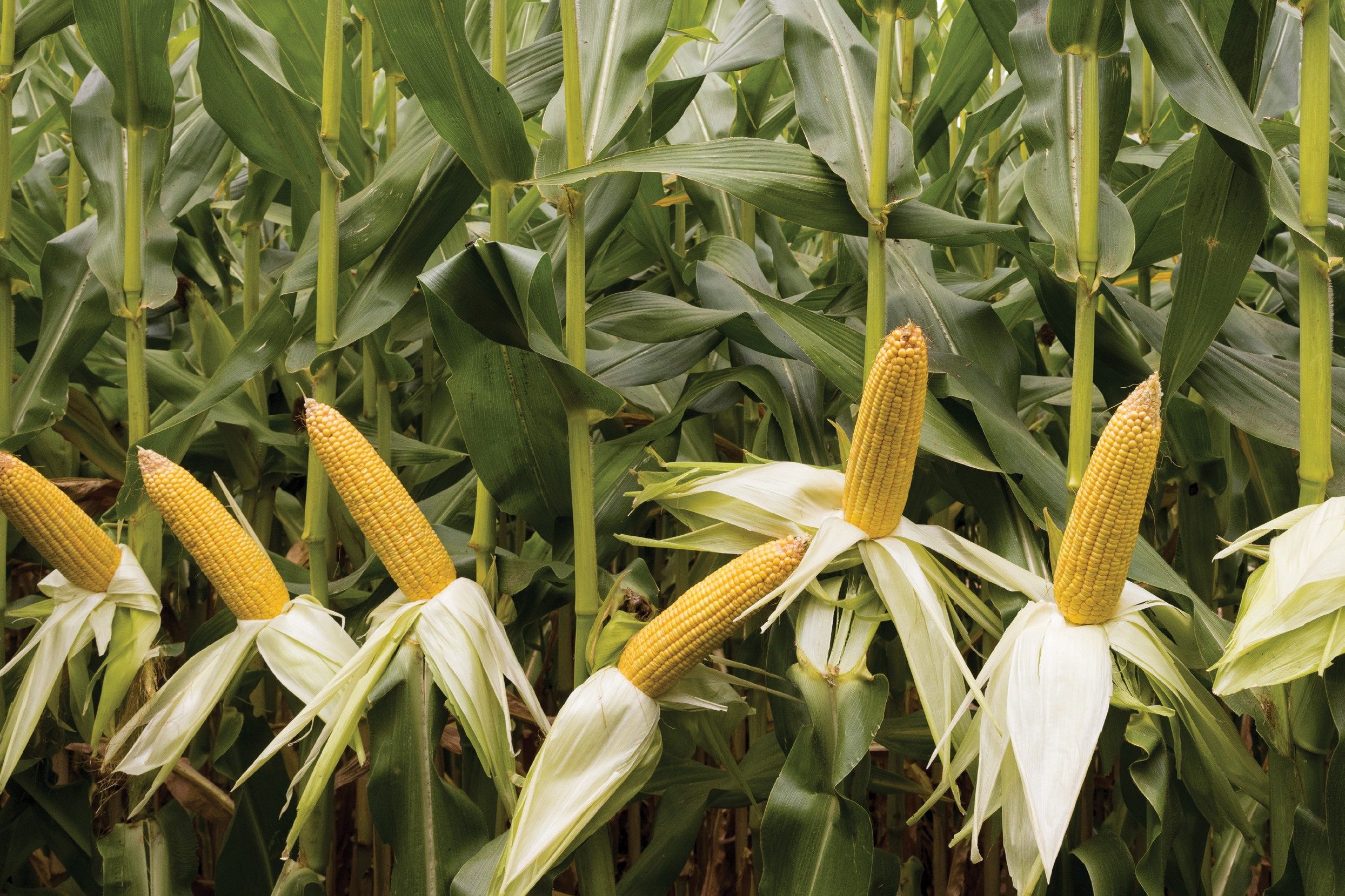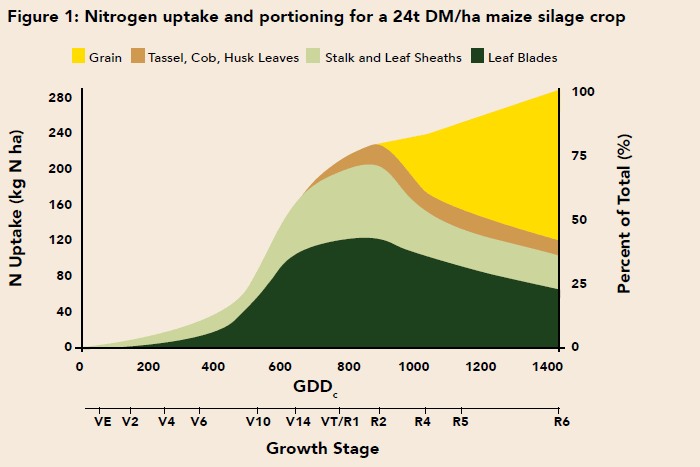Attention to seven wonders can lift yields
Leading US crop scientist Fred Below was keynote speaker at this year’s Foundation for Arable Research’s Premier Maize Event. By Raewyn Densley.

Getting the prerequisites right before focusing on the Seven Wonders of the Maize World can help farmers achieve high crop yields according to maize expert Professor Fred Below.
Fred, who is Professor of Crop Physiology in the Department of Crop Sciences at the University of Illinois was the keynote speaker at the Foundation for Arable Research’s Premier Maize Event in Hamilton in February.
Fred and his team at the Crop Physiology Laboratory research the physiology and biochemistry of high-yield maize and are focused on helping growers make onfarm management decisions which sustainably produce high yielding crops.
Unfortunately, Fred’s arrival in New Zealand coincided with that of Cyclone Gabrielle resulting in the planned field day being converted into an online event, but not before about 60 growers and industry representatives had made their way to the Mystery Creek venue.
Average United States maize yields go up and down depending on weather conditions however on average maize grain yield increases about one tonne/hectare every seven or eight years mainly due to improvements in crop management but also to maize hybrid genetics.
However, Fred’s two presentations didn’t focus on the average maize grower, rather they were pitched at how growers might achieve top yields, specifically a 19t/ ha maize grain or 31.5 t DM/ha maize silage crop.
“It’s not about what’s possible now,” he said. “In research we need to look down the road as to what we might be able to achieve.”
While yields of this level may appear unrealistic for many growers, Fred opened his presentation by introducing US maize grain grower Herman Warsaw of Illinois who set a world record of 23.2t/ha maize grain in 1985. In Fred’s first year as professor at the University of Illinois, he visited Mr Warsaw’s farm and saw first hand research plots which produced 19.7t/ha maize grain.
Warsaw achieved this by having high soil fertility levels, planting a high population in slightly narrower rows, matching the hybrid to his system and paying high attention to detail.
Within his presentations Fred stressed that getting a number of crucial prerequisites right was the starting point for achieving high maize yields. These included having good soil structure and drainage, controlling weeds, pests and diseases and having proper soil pH and adequate levels of potassium (K) and phosphorus (P) based on soil tests.
After the basics were in place, Fred ranked factors which could impact maize yield in his “Seven Wonders of Maize” table.
“The higher you are on the wonder list, the bigger the impact on the things below you,” Fred says. “For example the availability of nitrogen is greatly influenced by the weather”.
The top ranking “wonder” was weather and growers who had seen the destruction of Cyclone Gabrielle on their way to the venue didn’t need reminding that Mother Nature always has the final say.
“The weather dictates when you can plant and the weather after that determines the success of the crop. You are way better to plant when the weather is good for uniform, even emergence.”
While NZ’s temperate climate is seen as ideal for maize growing the penalty associated with hot nights was a timely reminder for growers facing the effects of climate change.
“Every night during grain fill that the temperature stays above 23C results in a 62kg/ha loss in grain yield.” Below stressed the importance of good crop nutrition which took into consideration crop requirements for key micronutrients, as well as macronutrients including nitrogen, phosphorus, potassium and sulphur.
“A micronutrient is a macro problem if it limits yield”.
To ensure adequate nutrition for a high yielding crop Fred’s believes that the form, rate, timing and placement of nutrient are important.
His research showed that in environments with high soil nitrogen levels, split applications of nitrogen increased crop yields. In the US, under warmer growing temperatures, maize needs more than 8kg nitrogen per hectare per day for 21 days prior to flowering. Nitrogen demand will not be quite as much on a daily basis, but the number of days of high requirement will be longer under NZ’s temperate growing conditions.
Nutrient placement was also critical because while maize roots grow to great depth, they only spread 15-20cm horizontally.
“Fertiliser placement is important because maize roots do not cross the row”.
Fred commented that in the US Y-DROP application of liquid nitrogen to maize was gaining popularity. The method allows for the nitrogen to be placed within a few centimetres of the maize stalks which means nearly 80% of the root mass is in the fertiliser application zone.
Strip till, a system where only the narrow strip where the maize seed will be planted is cultivated, was growing in popularity. Fred believed one of its key advantages was the banding of the fertiliser in the strip below the seed allowing better plant access to nutrients. Maize hybrid selection was in third place in Fred’s ranking system. His Illinois yield potential trials carried out using three sites, 32 hybrids and six factorial levels of management continued to demonstrate that “not all hybrids are created equal”.
“The best hybrid to plant is usually the newest one,” says Fred who also reminded growers not to buy seed on price as “you get what you pay for”.
Keeping the plant population up is a key factor in achieving high grain or silage yields.
“Grain yield is determined by the number of plants per hectare, the number of maize kernels per plant and the weight of each kernel,” he said. “The one which growers have the most control over is plants per hectare.”
In the US average seeding rates for grain crops have risen about 900 plants per hectare per year since the 1960s. Modern hybrids have the ability to perform well even at high planting densities, however as plant population increases, root size decreases meaning plants are more susceptible to competition from neighbouring plants.
“There is about 1% decrease in root mass per 1000 plant increase in population.”
Fred likened the competition plants face within the row to that of people around the dinner table.
“You don’t want to sit too close to someone at the dinner table, you want some elbow room and maize plants are the same.”
Fred predicted that recommended planting populations would continue to rise eventually, reaching a point where the increased competition between plants within a row limited yield increase. His solution to reducing competition between plants was to reduce row spacing. Narrow rows allow the crop to intercept more light, there is less competition between plants and the size of each plant’s roots increases when compared to the same plant population planted in conventionally spaced rows.
While high plant population was a fundamental of higher yields, Fred was quick to remind the audience that you couldn’t look at any one factor in isolation. The smaller root system of each individual plant further heightened the need to get the source, rate, time and placement of crop nutrients correct.
US research showed crop rotation could impact maize yields both positively and negatively. Maize crops following a legume generally had higher yields while maize following maize suffered a yield penalty. Fred recommended local maize growers evaluate the impact of crop rotations and winter crop options on maize yields.
He likened tillage system preference to religion in that followers tended to vehemently back their preferred option. His research showed tillage systems which preserved crop residues could have a positive impact on maize grain crop yields.
The final factor gaining grower interest globally is the use of biological products to enhance maize yield by relieving plant stress and/or improving nutrient availability. Biologicals commercially available in the US included seed treatments, products which were applied in-furrow with the starter fertiliser, foliar products which were applied with the post-emergence herbicide or at the reproductive stage along with fungicide or insecticide or to crop residues.
A number of different biological products showing promise in the US focused on taking nitrogen from the air and converting it into plant-available forms which could be used by the plant for growth and yield. These products had a low carbon footprint and no or limited nitrous oxide omission if produced directly in the root rhizosphere or as endophytes within the plant.
Fred’s advice on the use of biologicals was “be skeptical but willing to try”.
“Know what they are supposed to do and whether you need that done.”
Fred summed up his informative and entertaining presentations by reminding growers that they had to have the prerequisites of soil structure, drainage, season-long weed control and foliar disease protection right if they were chasing high yields.
“Then optimise each of the seven wonders and their positive interactions.”





